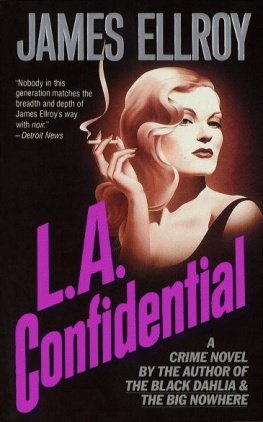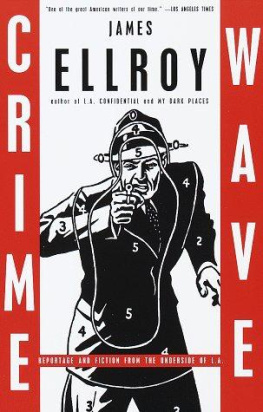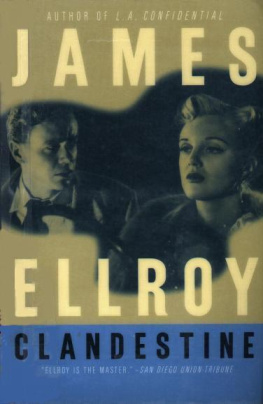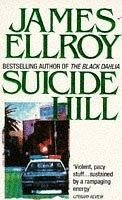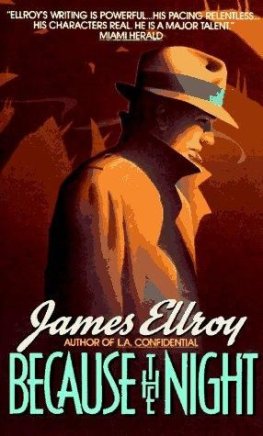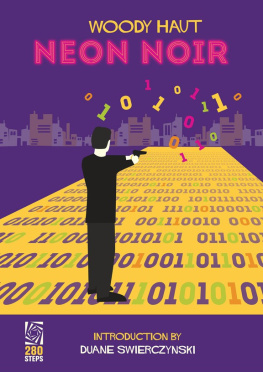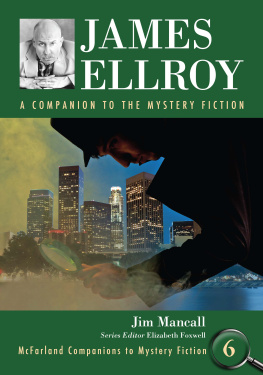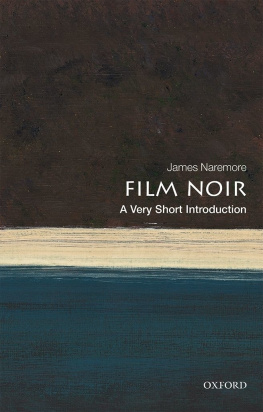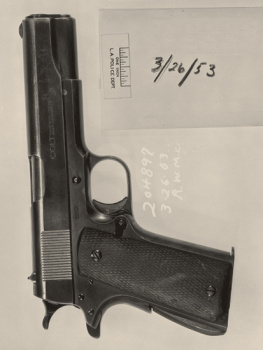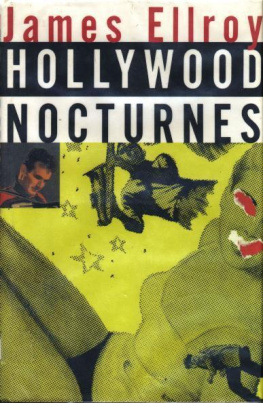

* * * *
The Best American Noir
of the Century
Ed by James Ellroy &
Otto Penzler
Scanned & Proofed By MadMaxAU
* * * *
CONTENTS
by Otto Penzler
by James Ellroy
1923 TOD ROBBINS
1928 JAMES M. CAIN
1938 STEVE FISHER
1940 MACKINLAY KANTOR
1945 DAY KEENE
1946 DOROTHY E. HUGHES
1952 HOWARD BROWNE
1953 MICKEY SPILLANE
1953 DAVID GOODIS
1956 GIL BREWER
1956 EVAN HUNTER
1960 JIM THOMPSON
1968 CORNELL WOOLRICH
1972 DAVID MORRELL
1979 PATRICIA HIGHSMITH
1984 STEPHEN GREENLEAF
1987 BRENDAN DUBOIS
1988 JAMES ELLROY
1991 JAMES LEE BURKE
1993 HARLAN ELLISON
1995 ED GORMAN
1996 JAMES CRUMLEY
1996 JEFFERY DEAVER
1998 LAWRENCE BLOCK
1999 JAMES W. HALL
1999 DENNIS LEHANE
2000 WILLIAM GAY
2001 F. X. TOOLE
2002 ELMORE LEONARD
2002 SCOTT WOLVEN
2005 THOMAS H. COOK
2005 ANDREW KLAVAN
2006 CHRIS ADRIAN
2006 BRADFORD MORROW
2007 LORENZO CARCATERRA
* * * *
FOREWORD
The French word noir (which means black) was first connected to the word film by a French critic in 1946, and has subsequently become a prodigiously overused term to describe a certain type of film or literary work. Curiously, noir is not unlike pornography, in the sense that it is virtually impossible to define, but everyone thinks they know it when they see it. Like many other certainties, it is often wildly inaccurate.
This volume is devoted to short noir fiction of the past century, but it is impossible to divorce the literary genre entirely from its film counterpart. Certainly, noir most commonly evokes the great crime films of the 1940s and 1950s that were shot in black-and-white with cinematography that was heavily influenced by early-twentieth-century German expressionism: sharp angles (Venetian blinds, windows, railroad tracks) and strong contrasts between light and dark. Most of us have a collective impression of film noir as having certain essentials: a femme fatale, some tough criminals, an equally tough cop or private eye, an urban environment, and night... endless night. There are bars, nightclubs, menacing alleys, seedy hotel rooms.
While it may be comforting to recognize these elements as the very definition of film noir, it is as simplistic a view as that which limits the mystery genre to detective fiction, failing to accept the numerous other elements of that rich literature, such as the crime novel and suspense stories.
Certainly the golden age of film noir occurred in those decades, the 40s and 50s, but there were superb examples in the 1930s, such as M (1931), in which Peter Lorre had his first starring role, and Freaks (1932), Tod Brownings unforgettable biopic in which the principal actors were actual carnival human curiosities. And no one is likely to dispute that the noir motion picture continued into the 1960s and beyond, as evidenced by such classics as The Manchurian Candidate (1962), Taxi Driver (1976), Body Heat (1981), and L.A. Confidential (1997).
Much of film noir lacks some or all of the usual clichd visual set pieces of the genre, of course, but the absolutist elements by which the films are known are less evident in the literature, which relies more on plot, tone, and theme than on the chiaroscuro effects choreographed by directors and cinematographers.
Allowing for the differences of the two mediums, I also believe that most film and literary critics are entirely wrong about their definitions of noir, a genre which famously but erroneously has its roots in the American hard-boiled private eye novel. In fact, the two subcategories of the mystery genre, private detective stories and noir fiction, are diametrically opposed, with mutually exclusive philosophical premises.
Noir works, whether films, novels, or short stories, are existential, pessimistic tales about people, including (or especially) protagonists, who are seriously flawed and morally questionable. The tone is generally bleak and nihilistic, with characters whose greed, lust, jealousy, and alienation lead them into a downward spiral as their plans and schemes inevitably go awry. Whether their motivation is as overt as a bank robbery, or as subtle as the willingness to compromise integrity for personal gain, the central figures in noir stories are doomed to hopelessness. They may be motivated by the pursuit of seemingly easy money or by love or, more commonly, physical desire almost certainly for the wrong member of the opposite sex. The machinations of their relentless lust will cause them to lie, steal, cheat, and even kill as they become more and more entangled in a web from which they cannot possibly extricate themselves. And, while engaged in this hopeless quest, they will be double-crossed, betrayed, and, ultimately, ruined. The likelihood of a happy ending in a noir story is remote, even if the protagonists own view of a satisfactory resolution is the criterion for defining happy. No, it will end badly, because the characters are inherently corrupt and that is the fate that inevitably awaits them.
The private detective story is a different matter entirely. Raymond Chandler famously likened the private eye to a knight, a man who could walk mean streets but not himself be mean, and this is true of the overwhelming majority of those heroic figures. They may well be brought into an exceedingly dark situation, and encounter characters who are deceptive, violent, paranoid, and lacking a moral center, but the American private detective retains his sense of honor in the face of all the adversity and duplicity with which he must do battle. Sam Spade avenged the murder of a partner because he knew he was supposed to do something about it. Mike Hammer found it easy to kill a woman to whom he had become attached because he learned she had murdered his friend. Lew Archer, Spenser, Elvis Cole, and other iconic private eyes, as well as policemen who, like Harry Bosch and Dave Robicheaux, often act as if they are unconstrained by their official positions, may bend (or break) the law, but their own sense of morality will be used in the pursuit of justice. Although not every one of their cases may have a happy conclusion, the hero nonetheless will emerge with a clean ethical slate.
Film noir blurs the distinction between hard-boiled private eye narratives and true noir stories by employing similar design and camerawork techniques for both genres, though the discerning viewer will easily recognize the opposing life-views of a moral, even heroic, often romantic detective, and the lost characters in noir who are caught in the inescapable prisons of their own construction, forever trapped by their isolation from their own souls, as well as from society and the moral restrictions that permit it to be regarded as civilized.
This massive collection seldom allows exceptions to these fundamental principles of noir stories. They are dark and often oppressive, failing to allow redemption for most of the people who inhabit their sad, violent, amoral world. Carefully wrought plans crumble, lovers deceive, normality morphs into decadence, and decency is scarce and unrewarded. Nonetheless, the writers who toil in this oppressive landscape have created stories of such relentless fascination that they rank among the giants of the literary world. Some, like Cornell Woolrich, David Goodis, and Jim Thompson, wrote prolifically but produced little that did not fall into the noir category, accurately reflecting their own troubled, tragic lives. Others, like Elmore Leonard, Evan Hunter, and Lawrence Block, have written across a more varied range of crime fiction, from dark to light, from morose to hilarious. Just not in this volume. If you find light and hilarity in these pages, I strongly recommend a visit to a mental health professional.


